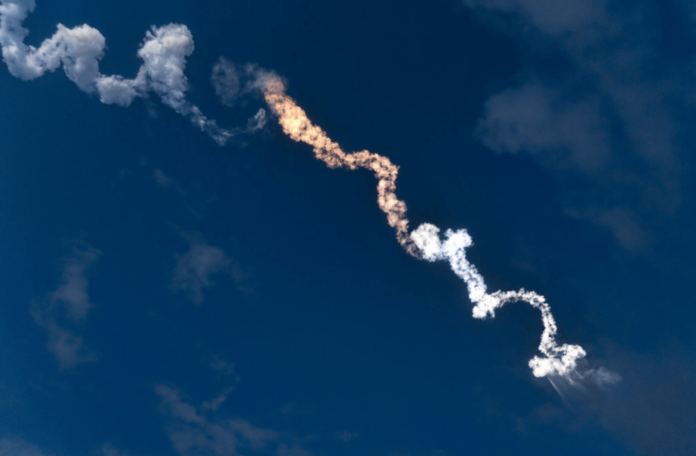
| Translate This News In |
|---|
According to a US federally funded space-focused research and development centre, remnants of China’s largest rocket launched last week are expected to re-enter the atmosphere late Saturday or early Sunday.
Following the US military’s announcement that US Space Command was tracking a “uncontrolled re-entry,” China’s foreign ministry said on Friday that most of the rocket’s debris will be burned up on re-entry and is unlikely to cause any harm.
The Aerospace Corporation said in a tweet sent Friday evening in the United States that its Center for Orbital Reentry and Debris Studies (CORDS) had predicted an eight-hour delay on either side of 0419 GMT on Sunday for the re-entry of the Long March 5B rocket body.
CORDS’ most recent “informed prediction” of the rocket body’s re-entry location was near New Zealand’s North Island, but it noted that re-entry could occur anywhere along paths spanning vast swaths of the globe.
The unmanned Tianhe module, which will become living quarters on a permanent Chinese space station, launched from China’s Hainan island on April 29 with the Long March 5B, which consists of one core stage and four boosters.
The Long March 5 family of rockets has played a key role in China’s near-term space ambitions, from delivering modules and crew to its planned space station to launching lunar and Mars exploration probes.
The Long March, which took to the skies last week for the second time since its maiden flight in May of last year, was the 5B variant’s second deployment.
Astrophysicist Jonathan McDowell of Harvard University previously told Reuters that pieces of the rocket could fall over land, possibly in a populated area, similar to what happened in May 2020 when pieces from the first Long March 5B rained down on the Ivory Coast, causing damage to several buildings but no injuries.
It is not uncommon to find debris from Chinese rocket launches in China. Authorities in the city of Shiyan, Hubei province, issued an evacuation notice to residents in the surrounding county in late April, advising them to prepare for the arrival of parts of the storm.
“The Long March 5B re-entry is unusual because the first stage of the rocket reached orbital velocity during launch rather than falling downrange as is typical,” the Aerospace Corporation wrote in a blog post.
The empty core stage has been losing altitude since last week, but due to uncontrollable atmospheric variables, the speed of its orbital decay remains unknown.
With an estimated weight of 18 tonnes, it is one of the largest pieces of space debris to re-enter Earth.
Only debris from the Columbia space shuttle in 2003, the Soviet Union’s Salyut 7 space station in 1991, and NASA’s Skylab in 1979 weighed more than the core stage of the first Long March 5B spacecraft, which weighed nearly 20 tonnes and returned to Earth last year.

















